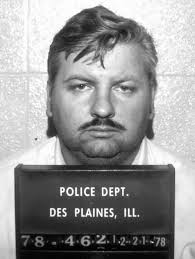
Introduction
John Wayne Gacy, one of America’s most notorious serial killers, has left a grim legacy that continues to captivate the public’s imagination and draw interest from criminal psychologists. His reign of terror in the 1970s, resulting in the deaths of at least 33 young men and boys, raises important questions about criminal behavior, psychology, and the systems that failed to stop him. Understanding Gacy’s case is not only essential for grasping the history of crime in America but also offers insights into the psyche of serial offenders.
The Life of John Wayne Gacy
Born on March 17, 1942, in Chicago, Illinois, Gacy had a troubled childhood marked by an abusive father and an early proclivity for violence. After moving to the suburbs of Chicago and establishing himself as a successful contractor, Gacy became a well-known member of his community. His charm allowed him to gain trust, which he exploited in the most horrific ways. His double life as a model citizen and a brutal murderer highlights a chilling aspect of human nature.
Patterns of Murder
From 1972 to 1978, Gacy lured his victims, often teenage boys, to his home under the premise of offering them work or a place to stay. Once there, he would torture, sexually assault, and eventually murder them. His infamous “Pogo the Clown” persona, a character he dressed up as for children’s parties and events, masked his capacity for brutality. The sheer volume of his crimes, along with the horrific nature of the murders, solidifies his path to infamy.
Arrest and Conviction
Gacy’s downfall began in December 1978 when authorities arrested him following the disappearance of 15-year-old Robert Piest. Investigators discovered the remains of his victims buried in the crawl space of his home, leading to overwhelming evidence of his guilt. He was convicted in March 1980, receiving a sentence of death for his heinous acts. His trial and eventual execution in 1994 were events that captivated the nation and sparked discussions about the justice system, public safety, and the nature of evil.
Conclusion
John Wayne Gacy’s life and crimes remain a significant part of American criminal history, prompting ongoing analysis of the social, psychological, and legal implications of his actions. As the public grapples with the realities of violent crime, Gacy’s case serves as a stark reminder of the dangers that can lurk beneath the surface of normalcy. The legacy of Gacy continues to influence both criminology and cultural representations of serial killers, making it a crucial topic for understanding crime and justice.

